The phrase “pandemic garden” is new to our lexicon since the COVID-19 coronavirus pandemic. I find it a bit comical, frankly, that people are talking about making a “pandemic garden.” Really what they mean is what people have long called a victory garden, or what preppers often call a survival garden.
Last week I started a short victory garden series of posts starting with What is the Best Victory Garden Size for You, then Preparing Soil for a Victory Garden, and then detailing 24 Must-Have Victory Garden Vegetables. Today I’m adding to this series with PANDEMIC Garden Tools and Tips. Why not spice it up with the new phrase? To me, the garden basics are the same.
As with the prior posts, the information from this post comes from the WWII-era ABC of Victory Gardens pamphlet (linked to at the end of this post). This was published with help from the Department of Agriculture in the 1940s.
This is all advice that should help the novice gardener in particular. Gardening is hard work and comes with a steep learning curve. Gardening involves a lot more than just dropping seeds in soil. For some, starting with a plant nursery may be a more manageable way to begin, learning the ropes slowly to start and building on experience from there.
If you’re set on going full-tilt into a survival garden, however, I can’t say as though I don’t blame you. That’s how I learn best too – just go all in!
Pandemic Garden Tools for Gardening
You don’t need many tools, but the ones you get should be of good quality. They will make your work much easier and will last longer. Buy tools that suit your strength. Obviously, a woman not used to gardening will not want tools as heavy or big as those suited to a strong man.
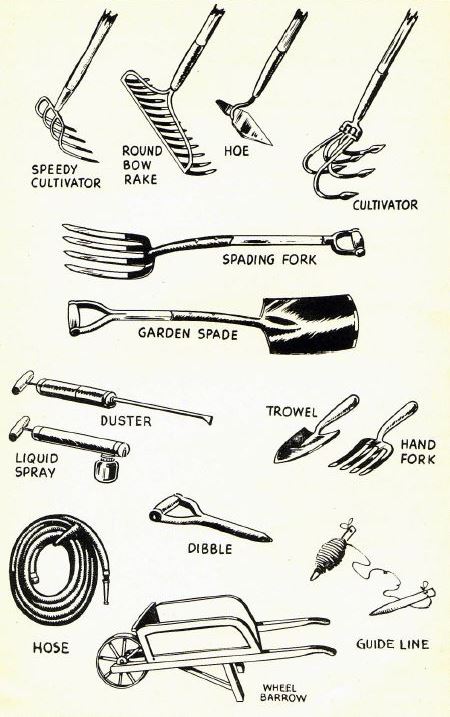
A Wheelbarrow – Be sure to have one. No other tool will save you so much labor and time in garden work. Almost any type will do.
A Spading Fork – For general digging. It has four flat prongs. It is lighter and better than a space for turning over and breaking up lumps of soil. You will also use it for manure and compost and for digging up potatoes and other crops in the fall.
A Good Spade – Also for general digging and shoveling. Be sure you get one with a blade ten or twelve inches long. One about six or seven inches wide is right for men – for or five inches for women.
An Iron Rake – For level off ground that has been loosened; for stones and trash. Get one that has ten to fourteen iron teeth, that curves in. Most people prefer the bow type.
A Hoe is Essential – For weeding, cultivating and planting. You will also use it for hilling up corn and other vegetables. The common garden type hoe is best.
A Cultivator for Speed – Better than a hoe for cultivating. Does more work with less effort. Once the plants start to grow you will use it more than any other tool. Get the speedy prong type. For larger gardens get one with adjustable tynes. Very large gardens should have a wheel cultivator.
Strong Cord Guide Line – Essential in laying out straight rows. Put a knot in the line every three feet to help you make measurements quickly. Tie stakes at each end.
Hose and Sprinkler – No garden is complete without one long enough to reach all corners. A good rotating arm sprinkler (or soaker hose) will save you lots of time and do a better job than you will by hand.
Small Tools – Make a dibble from an old tool handle and use it to make holes for transplants. You will need a small trowel. A sharp knife serves many needs.
Dusters, Sprayers – You will need these before the season is over to help you control insects and plant diseases.
These victory garden tools are not expensive, but they do add up if you’re starting from nothing. Never rule out the opportunity to save money at lawn sales and flea markets. Garden tools can often be had at these places for a fraction of what they’d cost new.
Pandemic Garden Helpful Hints
Remember These Important Do’s!
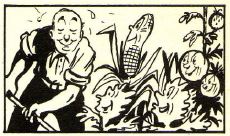
Do prepare your soil! You can’t live without food – neither can a plant! You need air – so does a plant (right down to its roots). So break that soil up. Make it rich with humus and fertilizer.
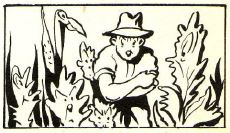
Do cultivate your garden! When you were young and tender you had a mother’s care. If you want your plants to grow up and be nice to you, shower them with loving care (and cultivation).
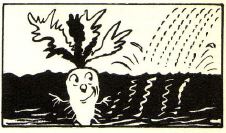
Do use water! You won’t be able to hear your plants when they’re crying for water – but they’ll be dying just the same. A good soaking rain, or get out the hose.
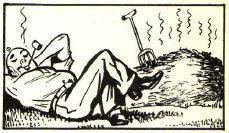
Do make a compost heap! It’s nature’s gift to gardeners and a lazy man’s joy. It saves you the work of burning up or carting out waste material. And how the plants love it!
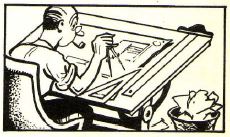
DO plan your garden on paper before you start! It will save you money, time, and lots of work. It will keep you from making many mistakes. You are going to have a big family of vegetables this summer – better plan for them now.
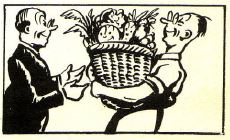
DO have a garden this summer! No vegetable ever tasted so good as the one you raised yourself. Get the biggest bargains in vegetables, health and new happiness – all practically for the sweat on your brow and the soil in your hands!
Remember These Important Don’ts
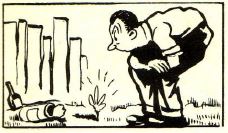
DON’T think gardening is mysterious or difficult! It does take planning – it does take work – but a lot less than you think it does. With a little luck and a little rain there is very little hard work left to do after you have prepared the soil and put your seeds in.
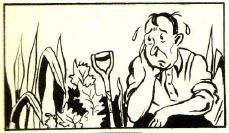
DON’T kill yourself! That sounds silly after just saying that gardening isn’t difficult. If you plan too much space and do not have the time to take care of it – well, that’s silly!
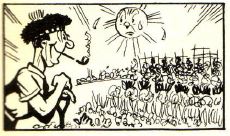
DON’T fail to plan succession crops regardless of the size of your garden! If you put everything in all at once you will have weeks when you have more than you can use and other weeks when you won’t have anything. Be Scotch – get two or three crops out of every row.
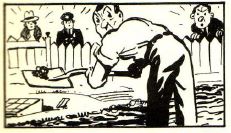
DON’T cheat! When you are turning over the soil this spring, don’t push your space in half or three-quarters way – put is all the way. All crops need broken up soil. Carrots, parsnips, etc., won’t half try if you don’t make it easy for their roots to spread downward.
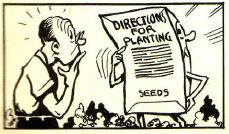
DON’T think you know more than the person who grew your seeds! You will find directions on the back of every packet of seeds. Read them carefully and follow them faithfully. No “expert” can give directions for planting the hundreds of varieties of seed available. The one who grows ’em knows best.
Tips for Your Pandemic Garden
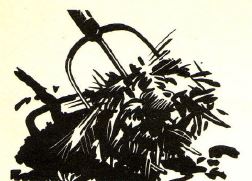
All soil is improved with the addition of some form of organic matter. Well-rotted manure, if obtainable, should be used to enrich the soil. Make certain that it is well worked into the soil when trenching.
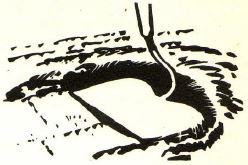
The flat side of the hoe may be used to tamp down the seeds after planting, thus making sure there are no air pockets.
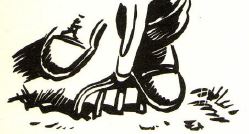
Be sure to sink spade or fork straight into the soil up to its base. It is best for the soil to be worked deeply. Remember to dig your vegetable garden again next autumn and leave it unworked during the winter.
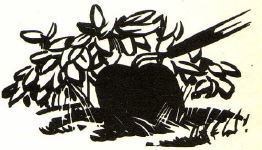
Use a hoe to remove weeds while they are small and eliminate tedious hand weeding at a later stage of growth.
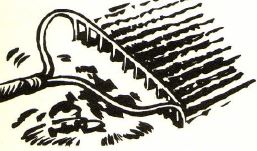
When preparing soil for vegetable seeds rake well to make sure there are no lumps of dirt or small stones to hinder the growth and development of the plants.

When planting seeds such as carrots, which take longer to sprout, mix with a few radish seeds which sprout quickly, thus marking the rows and making weeding easier.
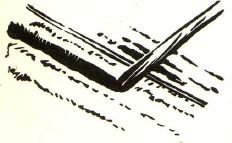
When planting small seeds be sure your rows are straight and uniform, using a string as a guide. To make the furrows, use the handle of your hoe and cover the seed with only 1/8″ or so of soil.
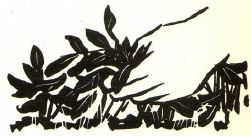
Most plants should be thinned as early as possible for the best growth. Plants suck as beets may be left slightly thicker. Thin these when tops are of eatable size.
The ABC of Victory Gardens Pamphlet
Much of this post came from the ABC of Victory Gardens pamphlet distributed widely during World War II. We have made the complete pamphlet available for download in PDF format. Click here to get a copy.
Further Recommendations
If you’re new to gardening, consider a copy of Mel Bartholomew’s best-selling book All New Square Foot Gardening. Then, when you’ve inevitably produced way more vegetables than you can eat in a season (a common beginner’s mistake), you’ll want a copy of the USDA’s Complete Guide to Home Canning.
It’s the go-to source on canning, and it’s inexpensive. You can get a pressure/canner cooker to accompany canning supplies and Mason jars that run from the high-end All American 930 to the more reasonably-priced Presto 8-Quart cooker. Consider these items as victory garden tools of a different sort!

